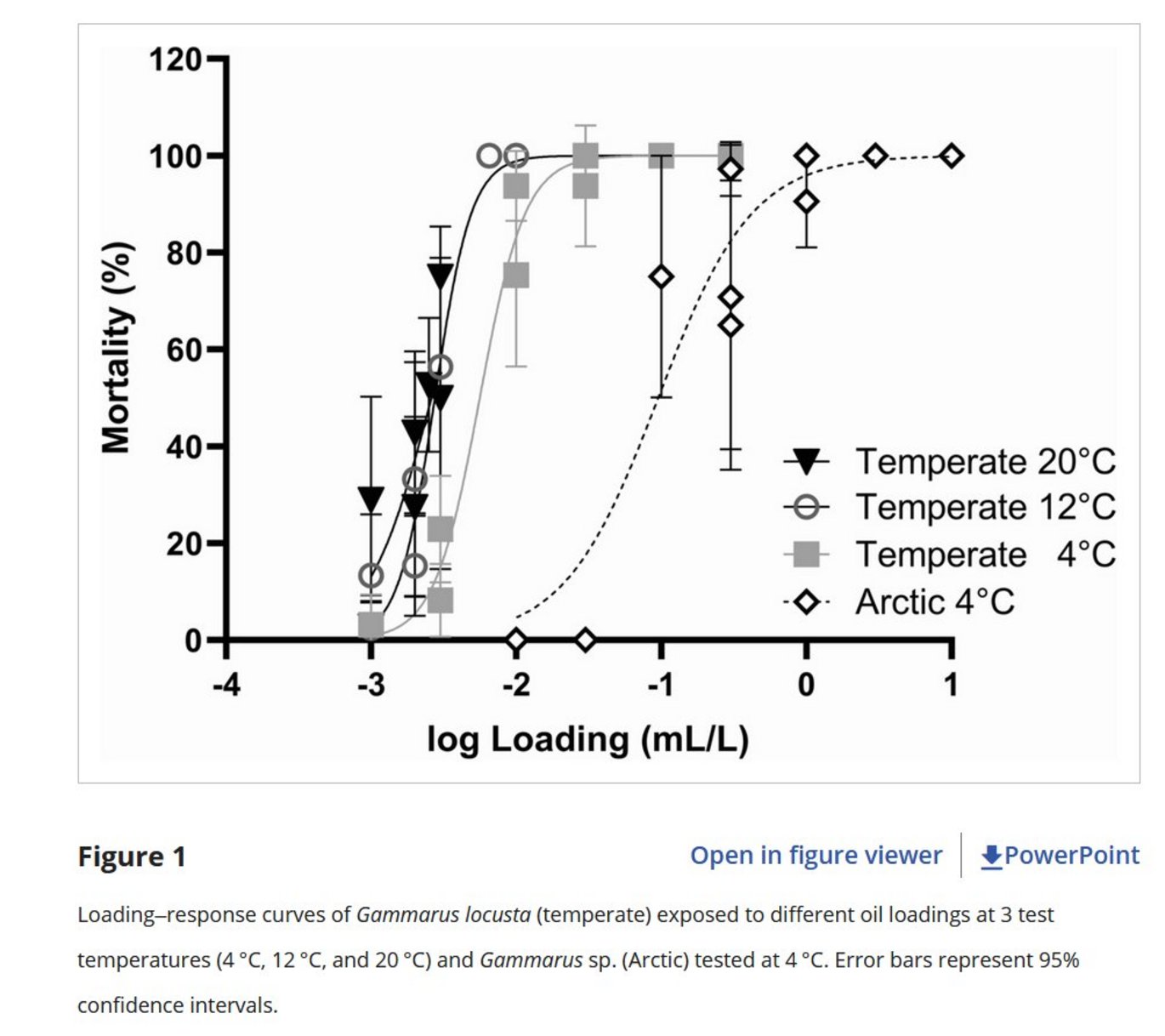Temperate Versus Arctic: Unraveling the Effects of Temperature on Oil Toxicity in Gammarids
New publication by Martine J. van den Heuvel-Greve, Michiel T.O. Jonker, Michiel A. Klaassen, Isolde C. Puts, Gabrielle Verbeeke, Lisa Hoekema, Edwin M. Foekema, Albertinka J. Murk

Abstract:
Shipping activities are increasing with sea ice receding in the Arctic, leading to higher risks of accidents and oil spills. Because Arctic toxicity data are limited, oil spill risk assessments for the Arctic are challenging to conduct. In the present study, we tested if acute oil toxicity metrics obtained at temperate conditions reflect those at Arctic conditions. The effects of temperature (4 °C, 12 °C, and 20 °C) on the median lethal concentration (LC50) and the critical body residue (CBR) of the temperate invertebrate Gammarus locusta exposed to water accommodated fractions of a fuel oil were determined. Both toxicity metrics decreased with increasing temperature. In addition, data for the temperate G. locusta were compared to data obtained for Arctic Gammarus species at 4 °C. The LC50 for the Arctic Gammarus sp. was a factor of 3 higher than that for the temperate G. locusta at 4 °C, but its CBR was similar, although both the exposure time and concentration were extended to reach lethality. Probably, this was a result of the larger size and higher weight and total lipid content of Arctic gammarids compared to the temperate gammarids. Taken together, the present data support the use of temperate acute oil toxicity data as a basis for assessing risks in the Arctic region, provided that the effects of temperature on oil fate and functional traits (e.g., body size and lipid content) of test species are considered. As such, using the CBR as a toxicity metric is beneficial because it is independent of functional traits, despite its temperature dependency. To the best of our knowledge, the present study is the first to report CBRs for oil. Environ Toxicol Chem 2024;00:1–11.
